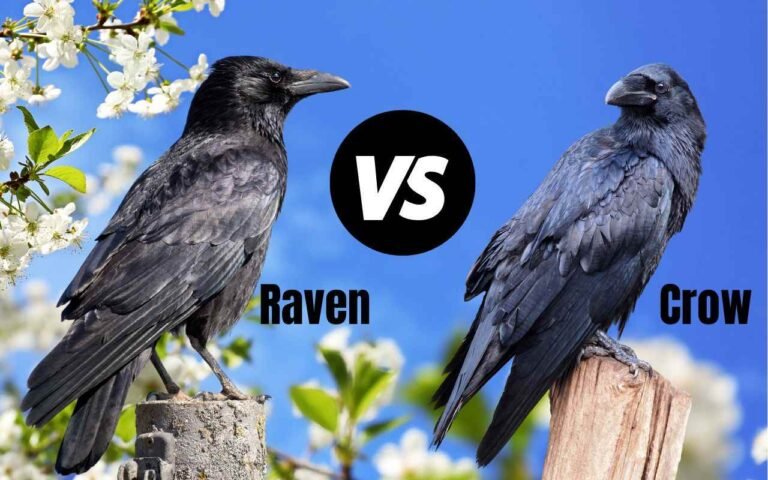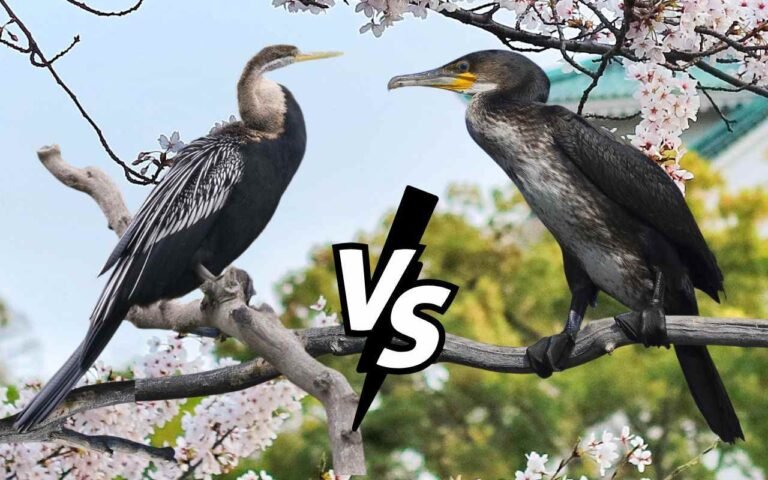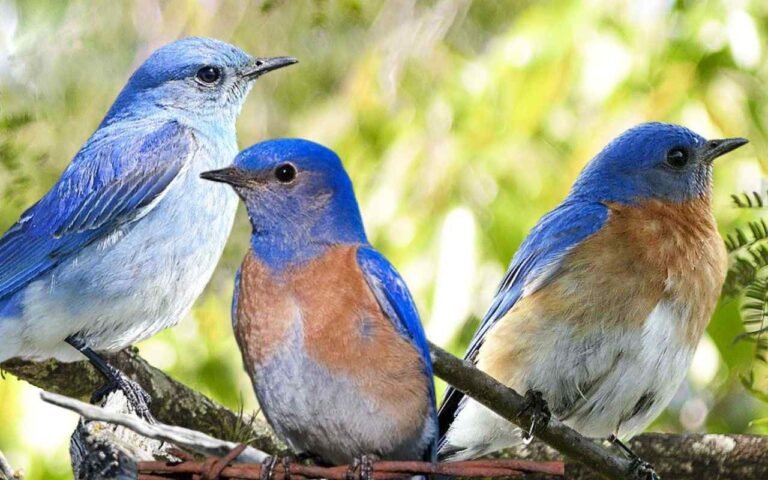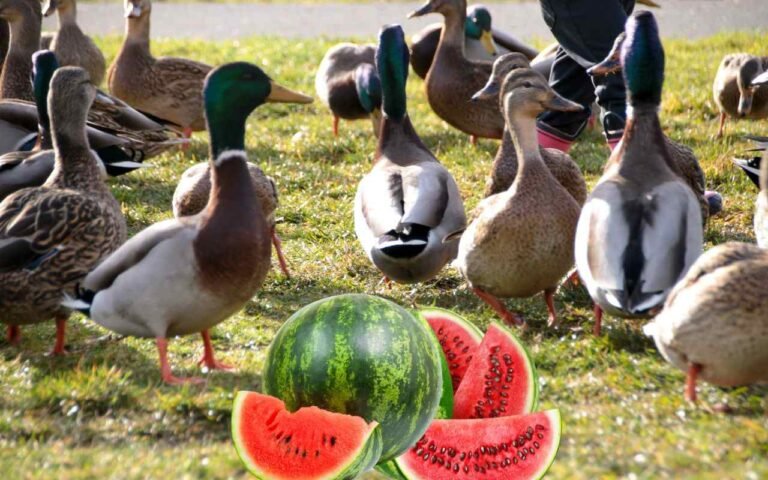Booby Birds Species: The Goofy Birds Known for Their Clumsy Walking and Brilliant Flying
Overview of Booby Birds
Booby birds are large seabirds in the Sulidae family of birds. Six living species of boobies inhabit tropical and subtropical oceans around the world.
Some key facts about booby birds:
- Classified in the order Pelecaniformes
- Closely related to cormorants, anhingas, and gannets
- Known for their distinctive deep plunge-diving hunting technique
- Have webbed feet and sharp, spear-like bills adapted for fishing
- Streamlined body shape allows for efficient diving
- Tropical distribution centered around islands and coastal regions
- Males and females have similar plumage
- Populations generally stable, not under significant threat
Boobies are fascinating seabirds that thrive as fish-eating specialists around tropical and subtropical oceans. Their unique hunting style and vibrant breeding plumage make them popular birds to observe in the wild.
Characteristics
Booby birds have several specialized physical characteristics and adaptations that allow them to thrive as plunge diving seabirds.
Size and Shape
- Boobies are large seabirds with bodies measuring 30-40 inches long.
- They have a chunky, compact shape with a short tail.
- The body is densely feathered for insulation and waterproofing.
- The plumage is smooth and streamlined to reduce drag when plunge diving.
- Their wings are long, broad, and pointed to provide lift and underwater propulsion.
- Boobies exhibit slight sexual dimorphism – males and females have similar plumage. Juveniles differ in coloration.
Feet and Legs
- Boobies have large webbed feet used to paddle and steer when diving.
- The webbing between the toes helps propel them underwater.
- Their feet are set far back on the body to provide thrust while swimming.
- Blue-footed boobies have distinctive bright blue feet used for social signaling.
- Red-footed boobies aptly have red feet.
- Powerful legs provide force to launch back out of the water.
Bills and Vision
- The bill is straight, sharply pointed, and spear-like for spearing fish.
- Special salt glands allow boobies to excrete excess salt from the seawater.
- Their eyes are specially adapted for excellent binocular vision.
- This allows them to spot fish from the air before plunge diving.
- A nictitating membrane protects the eyes when hitting the water.
Plumage
- Booby plumage is dense and compact to retain body heat when diving into cold water.
- Their feathers are oiled for waterproofing using preen oil from a gland near the tail.
- Breeding adults develop ornate facial plumage and vividly colored feet for courtship displays.
- Male and female boobies have identical plumage, while juveniles have duller coloration.
Diving Adaptations
- Boobies have a range of adaptations for their signature plunge diving method of hunting.
- Their streamlined body shape and pointed wings reduce drag when diving at high speeds.
- The impact when they strike the water is cushioned by air sacs beneath the skin.
- Nostrils seal on impact to keep water out when submerged.
- Powerful legs launch them back out of the water while chasing fish.
In summary, boobies have specialized anatomy like webbed feet, dense plumage, excellent vision, and plunge-diving adaptations that allow them to thrive as fish-eating specialists across tropical and subtropical oceans.

Types of Boobies
There are six species of boobies in the genus Sula.
Key Species of Boobies
| Species | Identifying Characteristics | Range |
|---|---|---|
| Blue-footed Booby | • Bright blue feet used for signaling • Brown plumage with white underside | Eastern Pacific - Galapagos, Peru, Gulf of California |
| Masked Booby | • Black facial mask on white plumage • Largest species at 40 in long | Pantropical - Atlantic, Pacific, Indian Oceans |
| Red-footed Booby | • Red feet and blue bill • Brown plumage with black flight feathers | Eastern Pacific - Mexico to Ecuador |
| Brown Booby | • All brown plumage • White underside and tail | Circumtropical oceans |
However there are three main types of booby birds:
Blue-footed Booby
The Blue-footed Booby is the smallest species at 30 inches long. They have distinctive bright blue feet used for signaling. Their plumage is mostly brown with white undersides.
Blue-footed boobies are found along the Pacific coasts of Peru, the Galapagos Islands, and the Gulf of California. They nest colonially on islands and cliffs.
Masked Booby
The Masked Booby is the largest species at 40 inches long. Adults have a striking black facial mask and white plumage. Juveniles are brown until age 2-3.
This is the most widespread species, found pantropically across the Atlantic, Pacific, and Indian Oceans. They nest on remote tropical and subtropical islands.
Red-footed Booby
Red-footed Boobies have bright red feet and blue bills used for displays. Their plumage is brown with white undersides.
Red-footed boobies range along the Pacific coasts of Mexico,CentralAmerica, Colombia,and Ecuador. They nest colonially in coastal trees and mangroves.
Other Species
Other booby species include:
- Brown Booby – found across tropical oceans
- Peruvian Booby – endemic to Peru and Chile
- Rare Abbott’s Booby – endemic to Christmas Island
In summary, boobies are adapted to specialized niches in tropical oceans worldwide. The blue-footed, masked, and red-footed are the most widespread species.
Hunting and Feeding
Boobies are specialized fish-eating seabirds that use a distinctive plunging diving method to catch prey.
Hunting Technique
- Boobies hunt by plunge diving from heights of up to 100 feet.
- They spot fish from the air, then dive headfirst into the water at speeds exceeding 60 mph.
- The impact force can plunge them up to 25 feet deep underwater.
- Their streamlined shape and pointed wings enable fast, aerodynamic dives.
- Underwater, they chase down darting fish using their wings to propel themselves.
- Boobies can swallow prey underwater before resurfacing.
Prey
- Boobies mainly feed on fish like flying fish, mackerel, anchovies, sardines, and squid.
- They require clear water to spot prey from the air before diving.
- Boobies are pursuit predators that chase mobile schooling fish.
- Their diving ability allows them to access fast-swimming prey other birds can’t catch.
Feeding
- Boobies typically feed individually rather than cooperatively.
- They may nest in large colonies but hunt solitarily over wide ocean ranges.
- Males and females incubate eggs in shifts, alternating hunting out at sea.
- Adults return to nests to regurgitate food for demanding hatchlings.
- Boobies have expandable gular pouches to carry multiple fish back to the young.
In summary, plunge diving allows boobies to thrive as fish predators across tropical and subtropical oceans around the globe.
Breeding
Boobies have unique breeding behaviors adapted to their tropical ocean habitats.
Courtship
- Boobies perform elaborate courtship displays, like aerial sky-pointing, marching, and waving their feet.
- Bright blue or red feet and bills are crucial in mate attraction displays.
- Synchronized dancing between paired males and females strengthens the bond.
- These visual displays help boobies identify and select mates in dense breeding colonies.
Nesting
- Boobies nest colonially in large groups numbering thousands of pairs.
- Nest sites are limited and closely packed on islands and sea cliffs.
- The nest is a simple scrape on the ground lined with vegetation and guano.
- Boobies aggressively defend small territories around the nest from neighbors.
Chicks
- Females lay 1-3 eggs which hatch after 40-50 days.
- Both parents share brooding and feeding responsibilities.
- When chicks hatch, they have open eyes and fluffy white fur covering them.
- Adults shade chicks from the intense tropical sun.
- Chicks fledge after 2-4 months but may still be fed by parents at sea.
Long-lived
- Boobies can live 20-40 years in some cases.
- They spend years reaching sexual maturity and perfecting hunting skills.
- Their long lives and slow reproduction makes populations vulnerable.
In summary, boobies have unique adaptations for breeding in dense colonies and raising chicks in harsh tropical environments.
Range and Distribution
Boobies have a widespread distribution across tropical and subtropical oceans globally.
Tropical Oceans
- Boobies are found between 30° N and 30° S latitude in tropical and subtropical oceans.
- They breed on islands and coastlines within this tropical zone.
- Boobies cannot survive long in cold water or cold air temperatures.
- Their adaptation limits their range to warm, productive tropical waters.
Breeding and Feeding Range
Different booby species have segmented breeding and feeding ranges based on ocean basins.
| Species | Breeding Range | Feeding Range |
|---|---|---|
| Blue-footed | Eastern Pacific | Eastern Pacific |
| Masked | Indian & Atlantic | Circumglobal tropics |
| Red-footed | Eastern Pacific | Eastern Pacific |
| Brown | Circumglobal tropics | Circumglobal tropics |
Island Breeding Sites
Some key breeding islands include:
- Galapagos Islands – blue-footed, masked
- Isla de la Plata – red-footed, blue-footed
- Midway Atoll – brown
- Christmas Island – Abbott’s Booby
In summary, boobies are widely distributed across tropical oceans globally, but with segmented ranges based on suitable island breeding sites and oceanic feeding areas.
Population Status
Most booby species have stable global populations and are not at risk of extinction. However, some species face local threats.
Stable Populations
- The global population sizes of most booby species are quite large and stable.
- Species like the brown booby and masked booby number over 100,000 breeding pairs.
- Boobies have benefited from the protection of breeding colonies on nature reserves.
- Their remote island habitats provide refuge from human disturbance.
Localized Declines
Some species have experienced localized population declines:
- The Abbott’s Booby was thought extinct until a small population was rediscovered.
- Peruvian boobies have declined due to guano harvesting and El Niño events.
- Blue-footed boobies in the Galapagos saw declines in the late 1900s.
Threats
- Habitat degradation at breeding colonies
- Human exploitation of eggs and guano
- Disturbance by fisheries
- Pollution and depletion of fisheries
- Climate change impacts on tropical oceans
More monitoring and protection of sensitive breeding sites is needed to ensure stable booby populations. But overall, most species remain abundant and resilient across their global ranges.
Interesting Facts
Boobies have some fascinating behaviors and quirky traits:
Clumsy on Land
- Boobies are incredibly clumsy and awkward when on land due to their adaptations for swimming.
- Their tiny legs set far back on the body, causing them to shuffle and stumble on land.
Origins of Name
- “Booby” originates from “bobo,” Spanish for “stupid” or “foolish.”
- This likely refers to their clumsy behavior on land.
Blue Feet
- The bright blue feet of the Blue-footed Booby serve an important thermoregulatory function.
- More blood flow to the feet releases heat and cools the birds in the hot tropical climate.
Dancing Displays
- Elaborate courtship dances are performed by pairs, often incorporating their specialized feet.
- These displays strengthen social bonds and may select healthier mates.
Hissing Calls
· Boobies produce a variety of hissing, whistling, and grunting vocalizations.
· These calls are essential for communication between mates at the nest site.
In summary, boobies have some interesting behavioral quirks related to their life in tropical oceans. Their clownish nature on land belies their swimming and diving prowess.
Conservation
Most booby species remain abundant, but conservation efforts are needed to protect vulnerable populations.
Monitoring
- Continue long-term monitoring of booby-breeding colonies to detect population trends.
- Survey remote islands to find unknown populations.
- Band birds to study movement patterns and survival rates.
Protect Breeding Sites
- Establish protected areas around key breeding islands and colonies.
- Restrict human access and disturbance during the breeding season.
- Prevent habitat degradation from development or exploitation.
Reduce Threats
- Prohibit harvesting of eggs and guano at colonies.
- Implement seasonal fishing bans near breeding islands.
- Remove invasive mammal predators from breeding sites.
- Reduce pollution from plastics that birds ingest.
Manage For Climate Resilience
- Protect a network of breeding sites to provide redundancy.
- Prioritize protection of colonies with higher elevations less vulnerable to sea level rise.
- Reduce other threats to maximize capacity to adapt to climate shifts.
Targeted conservation action informed by monitoring data can ensure boobies remain a thriving fixture across the world’s tropical oceans.
Where to Observe Boobies
Boobies can be seen in many tropical locations worldwide. Here are some prime spots:
Galapagos Islands
- Blue-footed and masked boobies breed in the Galapagos.
- Darwin noted their tameness on his voyage here.
- Observe courtship dances and mating rituals up close on islands like Española.
Midway Atoll
- Midway Atoll hosts over 1 million breeding seabirds, including brown boobies.
- See boobies amid a diversity of other tropical species.
- Remote location requires permit and tour for access.
Isla de la Plata
- Called “the poor man’s Galapagos,” this island off Ecuador hosts large colonies of blue-footed and red-footed boobies.
- Also see frigate birds and ocean wildlife like whales.
- Easily accessible by tour boat from mainland Ecuador.
Mexico
- Islands off the coasts of Mexico, like Isla Isabel, host major colonies of blue-footed and masked boobies.
- Watch courtship displays on boat tours from Mexico’s Pacific coast.
Boobies thrive on tropical islands worldwide. With some guided island-hopping, visitors can observe their behaviors and natural beauty up close.
Frequently Asked Questions
How many species of Booby are there?
There are different types of booby birds: Blue-footed, Red-footed, Brown, Peruvian, Masked, and Nazca. These vast tropical and subtropical seabirds are famed for their spectacular courtship rituals and swimming and diving abilities. Boobies control marine populations and feed sharks and other seabirds by eating fish, squid, and other marine life. Despite the blue-footed Booby being the most famous species and located in the Galapagos Islands and the eastern Pacific Ocean, the red-footed Booby is equally well-known in the Caribbean and the western Atlantic. Four species inhabit the Pacific and Indian Oceans. Despite habitat loss and pollution, boobies are not endangered, adding to their diversity and importance as unique seabirds.
What are booby birds?
Booby birds are large seabirds in the Sulidae family. There are six species worldwide that inhabit tropical oceans. They are known for their plunging style of diving to catch fish.
Why are they called boobies?
The name “booby” likely comes from the Spanish word “bobo,” meaning “foolish” or “stupid.” This refers to their clumsy, awkward behavior on land compared to their grace and speed in hunting fish underwater.
What species of boobies are there?
The main types of boobies are the Blue-footed Booby, Masked Booby, Red-footed Booby, Brown Booby, Peruvian Booby, and Abbott’s Booby. Each is adapted to a particular ocean habitat.
How do boobies hunt fish?
Boobies are plunge divers – they spot fish from the air and then dive headfirst at high speeds, piercing the ocean surface to pursue prey underwater using their wings for propulsion. Their streamlined bodies and spear-like bills are adapted for this technique.
Where do boobies live and nest?
Boobies live across the world’s tropical oceans but nest colonially on remote islands and atolls. Different species are segmented by ocean basin based on suitable island nest sites within their range.
Why do Blue-footed Boobies have blue feet?
The bright blue feet of Blue-footed Boobies serve an important function. More blood flow to the feet releases excess heat and helps these birds cool off in hot tropical climates. Their blue feet are also used for courtship displays.
- Florida Turkey Season 2025-2026: Latest Hunting Dates, Licenses & Rules Available! - October 16, 2025
- Delaware Turkey Season 2025-2026: [Everything You Need to Know Dates, Regulations, Bags & More] - October 16, 2025
- Connecticut Turkey Season 2025-2026: [Dates, Regulations, Bag Limits & More] - October 16, 2025




